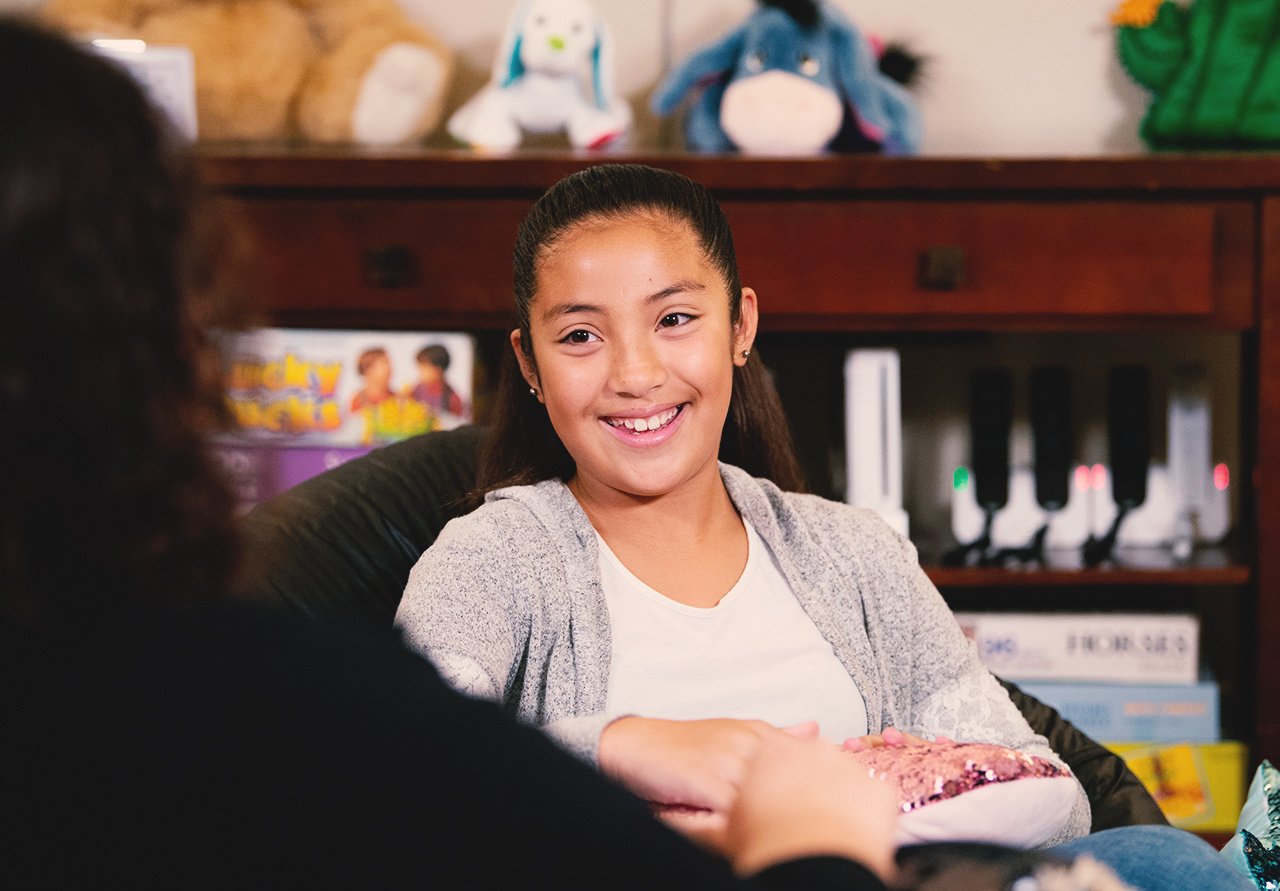
Everywhere across the United States, children are at risk.
The 2021 CDC Youth Risk Behavior Survey revealed that 55% of high school students in the U.S. endure emotional abuse at home, 20% face community violence, and 3% grapple with housing instability. These statistics highlight the need for a nurturing intervention in the lives of many children.
Mentors, schools, and communities are key to guiding at-risk youth to success. In this guide, you’ll find more information on working with at-risk youth and how you can help make a difference in a child’s life.
Who are at-risk youth?
The term “at-risk” refers to children who are vulnerable in some way due to their actions or circumstances. This could be a student who consistently arrives at school hungry or experiences violence in their household. Additionally, it could refer to students who need academic assistance.
There are two types of youth risks: risk behaviors and risk factors.
- Risk behaviors: Behaviors that increase the chance of adverse consequences for young people. Drug abuse, not wearing a helmet, possessing weapons, or being sexually active with many partners are examples.
- Risk factors: Conditions or circumstances that contribute to negative outcomes for young people. Examples include depression and anxiety, exposure to violence or bullying, or the absence of adult guidance.
It’s important to note that risk factors don’t always lead to risk behaviors — not every bullied or depressed student abuses drugs or engages in violence. Also, the presence of risk factors or behaviors doesn’t guarantee negative outcomes for children. But, children exposed to more risks may experience more adverse consequences.
Benefits of working with youth at risk
Children at risk need extra support, supervision, and motivation. Parents, teachers, and other trusted adults can prevent negative outcomes by intervening early with appropriate resources.
Working with at-risk youth takes many forms, from counseling to mentoring to training. Mentoring through after-school activities and community-based programs can promote positive behaviors and reduce the risk of youth delinquency. Residential care programs and work experience particularly benefit young people with more complex needs.
Programs like these offer many benefits, including:
- Self-esteem and confidence: Helping young people navigate challenges can boost their self-esteem and foster a stronger sense of self-worth.
- A safe environment: After-school activities and residential care offer safe spaces where young people can express themselves freely and openly.
- Academic achievement: With the right support and resources, at-risk youth can overcome academic hurdles, increasing their chances of success in education.
- Strong relationships: Through these programs, youth at risk can build strong, positive relationships with mentors, counselors, and their peers.
- Skill development: Work experience programs can provide invaluable vocational skills and real-world experience, equipping young people for future employment opportunities.
- Emotional support: Providing at-risk youth with a safe space to express and process their emotions can promote better mental health and emotional well-being.
Skills for interacting with vulnerable youth
Whether you are a teacher, a camp counselor, or a volunteer, there are many ways to support at-risk children. A key component is creating a trusting environment where young people feel comfortable making mistakes and sharing their dreams. A trust-based relationship fosters lasting, meaningful progress.
Trust isn’t all that is required when working with at-risk youth. Several other key qualities are equally important:
- Sincerity: The best youth workers are committed to helping children and practice what they preach. Young people are quick to discern genuine concern from feigned interest.
- Humility: Successful youth workers embrace their own imperfections. They understand they don’t have all the answers and are open to personal and professional development.
- Objectivity: Exceptional youth workers respect young people for who they are. They put themselves in the youth’s shoes and avoid imposing their worldviews.
- Patience: Effective youth workers listen patiently, even when they disagree. They refrain from hasty judgments and strive to understand the child’s perspective before responding.
- Balance: Top-notch youth workers maintain a healthy personal life. They manage their own well-being and set clear boundaries to avoid burnout, ensuring their interactions with youth remain positive and productive.
5 strategies and tips for working with at-risk youth
Understanding at-risk youth and developing the mindset and skills needed to work with them is just the beginning. Here are five practical strategies for engaging and building relationships with at-risk youth.
1. Create an emotionally safe space.
Emotional safety is about creating an environment where young people can express their feelings and thoughts without fear of ridicule or criticism. It allows young people to freely explore their emotions and feelings and develop self-confidence and trust. This can help young people build healthy relationships, develop empathy, and communicate more effectively.
To create an emotionally safe space, listen without judgment. Practicing active listening can be an effective way to ensure a safe space for young people. Ask open-ended questions and repeat what the person has said to show that you are listening. Finally, provide positive feedback to show that you value their thoughts and feelings.
2. Engage in healthy communication.
Healthy communication forms the cornerstone of strong relationships. It means creating an open dialogue where everyone feels heard and respected. This promotes trust, mutual understanding, and a stronger connection between the youth and their mentor.
The OARS approach can help you communicate well and exchange information with empathy and respect:
- Open-ended questions: Get teens to share their thoughts, perspectives, and experiences with open-ended questions.
- Affirmation: Affirming statements encourage and support youth, building their sense of hope and belief that they can achieve their goals.
- Reflection: Show empathy by carefully listening, repeating, rephrasing, inferring (guessing what the youth is trying to communicate), and reflecting back.
- Summary: Summarizing lets the youth see that the professional listened carefully, and it reinforces or emphasizes key points.
3. Be generous with praise.
Positive reinforcement is a powerful tool for motivating at-risk youth and building self-esteem. It’s about acknowledging their efforts and achievements and helping them recognize their strengths and capabilities.
For effective praise, be specific and authentic. Don’t just say “good job;” highlight exactly what they did well. For instance, “I noticed how well you handled that disagreement with your classmate. You were really patient and understanding.” Genuine, thoughtful praise can help young people develop a more positive self-image and inspire them to continue positive behaviors.
4. Recognize common emotional triggers.
Recognizing emotional triggers means understanding what situations or actions may cause a strong emotional response. This understanding can help prevent conflicts or misunderstandings and help youth better manage their reactions.
To recognize emotional triggers, pay close attention to young people’s behaviors. If you notice a pattern, discuss it with them in a respectful and non-accusatory manner, such as, “I noticed that you seem upset when we talk about homework. Can we talk about that?” Addressing triggers proactively can help youth develop coping mechanisms and create a more supportive environment.
5. Practice de-escalation.
De-escalation involves calming a situation that escalates into conflict or negative behavior. It’s a critical skill when working with at-risk youth because it helps them regain control of their emotions and prevents minor incidents from escalating.
To practice de-escalation, respond calmly and softly when a child displays intense emotions or behaviors. Avoid getting defensive and validate their feelings. You might say, “I see you’re really upset right now, and that’s OK. Let’s take a few deep breaths together.” By remaining calm, you can show them how to handle intense emotions.
Make a difference with Rawhide
Empathy, communication, and practical strategies are essential when working with at risk youth. From creating emotionally safe spaces to understanding emotional triggers, youth workers have many ways of impacting young lives.
If you want to make a difference, there are many ways to get involved. Explore our programs at Rawhide or contact us for more information. Let’s join hands in guiding our youth toward brighter futures.










